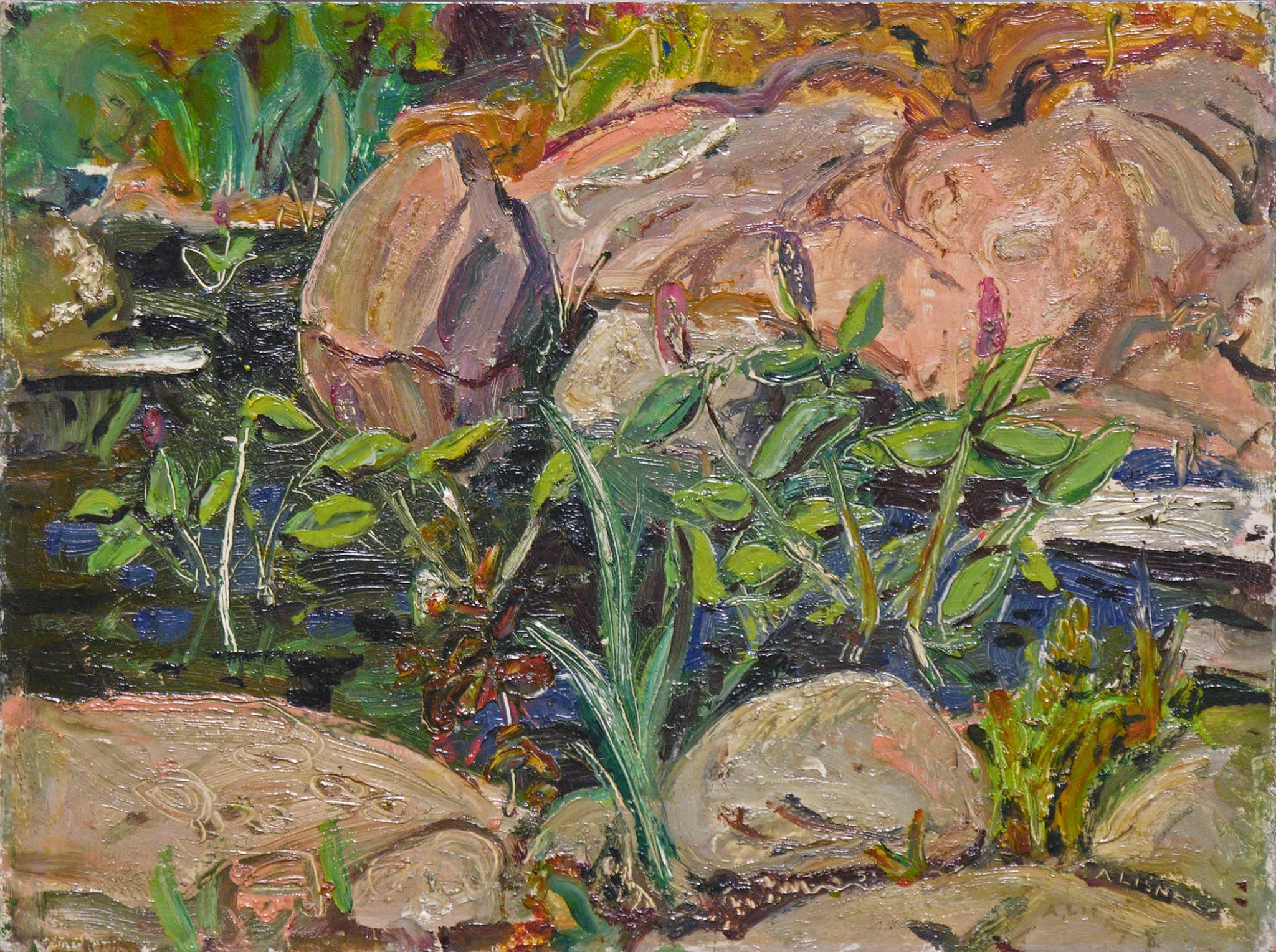Arthur Lismer and Georgian Bay

Arthur Lismer, Rocks and Pool, Georgian Bay, 1953
In the first half of the twentieth century, Arthur Lismer was a peer among an esteemed group of artists who were defining a distinctive nationalistic style of painting inspired by the wilderness of Northern Canada. For Lismer, the North presented an irresistible atmosphere that promised happiness and vitality, Georgian Bay being an especially compelling site for its sense of natural harmony and its proximity to his Toronto residence. It was Dr. James MacCullum, an enthusiastic patron of Lismer’s artistic circle, who first invited the artist and his wife, Esther, to stay with him in 1913 at Go Home Bay in the Georgian Bay region. It took no more than this initial contact to convince Lismer that he had happened upon a true treasure.
In letters and unpublished manuscripts, Lismer wrote about his passion for visiting Georgian Bay:
My vacations were few, but whenever possible I went with my wife and family up to Georgian Bay--sometimes with Jackson, MacDonald, or Varley.” He described Georgian Bay as “the happy isles, all different, but bound together in a common unity of form, colour and design. It is a paradise for painters.1
Lismer returned to Georgian Bay regularly throughout his career, creating an extensive body of painting that speaks resoundingly to the admiration and awe that he felt for it. His written observations tell us that it was the raw, natural setting of Georgian Bay as well as the intense interactions of this setting with the earthly elements that amazed him and provided the inspiration for his creations:
Georgian Bay! Thousands of islands, little and big, some of them mere rocks just breaking the surface of the waters of the Bay—others with great, high rocks tumbled in confused masses and crowned with leaning pines, turned away in ragged disarray from the west wind, presenting a strange pattern against the sky and water. Some of the trees are like miniatures in an oriental garden, their roots seeking tenacious hold in the cracks in the rocks. The undergrowth is tangled and in spring the wild iris and cherry blossoms cluster round little pools in the hollows.2
An admirer of fellow Englishman John Constable, Sheffield-born Lismer could perceive beauty in any corner or fragment of nature. Following a year-long trip to South Africa in 1936, where he gave a series of lectures on art education, as well as his attendance and participation in 1937 at the New Education Fellowship (NEF) conference in New Zealand, Lismer's work evolved from the distinctive Group of Seven style with a foreground, mid background and horizon to subjects rendered from a more intimate perspective with greater abstract quality, as we see in Rocks and Pool, Georgian Bay. Arthur Lismer’s expressive pictures of Georgian Bay leave a legacy in keeping with the high regard that Canadians hold for their country’s natural bounty. Lismer succeeds beautifully in communicating the bona fide wonder of nature, reminding us to return to our roots and to appreciate life’s simple pleasures.
Lismer visited Georgian Bay in the following years: 1913, 1915, 1916, 1920, 1922, 1929, 1933, 1939, 1944, 1946, 1950, 1953.
References:
- Lismer Bridges, Marjorie. A Border of Beauty. Toronto: Red Rock, 1977. Print.
- ibid





Comments
Thank you,
Larry... 1-416-576-2178
Add a comment